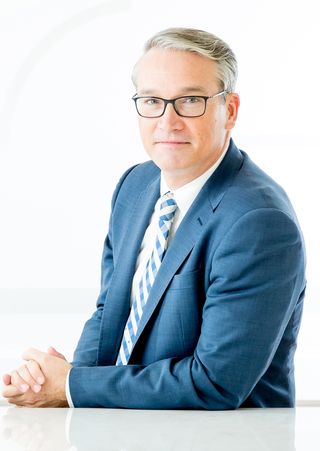The American Interest
By Tom Switzer
The tributes to Lee Kuan Yew as one of the most consequential and influential figures of postwar Asia have been coming from all quarters, and you can add mine to the list.
When Singapore was created as an independent state in the 1960s, it had no natural resources, was located in a hostile regional environment at the height of the Cold War, and had a volatile mix of Chinese, Malaysian, and Indian racial groups. Yet virtually alone Lee, a staunch anti-communist and advocate of free trade and private enterprise, transformed this tiny British outpost into one of the wealthiest, most stable, and least corrupt nations, as well as one of the most successful multi-ethnic societies in the world.
Lee distinguished himself for another reason: he was one of the world’s most insightful commentators on international relations. In 1998, Margaret Thatcher remarked: “In office, I read and analysed every speech of his. He was never wrong.” Henry Kissinger once said: “No world leader has taught me more.”
Writing in his 1982 book Leaders, Kissinger’s boss, President Richard Nixon, declared that Lee, along with Robert Menzies (whom both Lee and Nixon rated as the greatest Australian Prime Minister), shared the distinction of being “big men on small stages, leaders who, in other times and in other places, might have attained the world stature of a Churchill, a Disraeli or a Gladstone.” Nixon’s admiration was based on his many discussions with Lee in and out of office. Indeed, a little known fact is that Lee was one of the few international statesmen Nixon had consulted about an opening to Communist China before 1971–72.
From the early 1950s, when he endorsed Senator Joe McCarthy’s charge that treasonous U.S. diplomats “lost China”, to the mid 1960s, when he goaded President Lyndon B. Johnson to escalate the Vietnam War (ostensibly to fight the spread of Chinese communism), Nixon earned his reputation as a quintessential Cold Warrior. He had consistently argued that “Red China” was an “outlaw nation,” whereas the Nationalists in “Free China”, or Formosa/Taiwan, were the true representatives of China. Trade, recognition, or admission into the United Nations would amount to “appeasement.”
But Nixon changed his thinking on Communist China before he was elected in November 1968, and it was Singapore’s Lee, as well as France’s Charles de Gaulle, West Germany’s Konrad Adenauer, and Pakistan’s Muhammad Ayub Khan, who privately helped him see the light. Unlike many of today’s aspiring presidential candidates, Nixon travelled extensively around the world from 1963 to 1967. These excursions abroad were not simply exchanges of courtesies; they included various meetings with leading political figures that ranged across substantial discussions about regional politics and international relations.
On April 18, 1967, one meeting took place with Lee Kuan Yew, the 43-year-old leader of Singapore. In 1996, Lee recalled that he found himself in a serious two-hour discussion with Nixon about a China opening, “his main interest,” according to Lee, and obviously a topic more engaging to him than Vietnam. Nixon kept asking: what should U.S. policy towards China be? To which Lee replied:
I said that if I were an American, I would consider that China shared a 4,000-mile boundary with the Soviet Union, a boundary which the Russians had changed only in the last century. So they had unresolved problems. There was no boundary between the US and China. The US had drawn a line across the Taiwan Straits with the Seventh Fleet, but this was a line drawn on water, and need not be perpetual. There was much to be gained by engaging China.
A few months later, Nixon delivered two landmark statements: an off-the-cuff address at the Bohemian Grove, an annual gathering of the nation’s business elite in northern California; and an article in Foreign Affairs, the prestigious journal published by the New York-based Council of Foreign Relations. Both in their different ways reflected a new Nixon, one who recognized not just that the communist world was pluralistic and that the U.S. should exploit the Sino-Soviet split to its strategic advantage, but that America should “pull China back into the world community…as a great and progressing nation.” In the October 1967 issue of Foreign Affairs, he argued:
Taking the long view, we simply cannot afford to leave China forever outside the family of nations, there to nurture its fantasies, cherish its hates and threaten its neighbours…. There is no place on this small planet for a billion of its potentially most able people to live in angry isolation.
Nixon had sent his first public signal that he had changed his thinking on China. In July 1971, when President Nixon announced his decision to visit China, the amazing thing is that America and the world were amazed. Lee Kuan Yew was hardly shocked.
When he was honored at a gala ceremony at the Washington-based Nixon Center for Peace and Freedom in November 1996, Lee recalled his conversations on China with Nixon, not just in April 1967 but also in 1969, 1970, and 1971. Years after Nixon’s opening to the communist regime, Lee read Nixon’s books and realized that he had made thorough notes of their first exchange in 1967 and quoted him discreetly so that the Singaporean leader would not be embarrassed.
We all know that Nixon’s visit to Peking/Beijing in February 1972 was, as Lee once put it, “a turning point and a major contribution to world peace and stability.” Less well known is Lee’s role in encouraging Nixon to open U.S. relations with China.
This article was originally published at The American Interest





